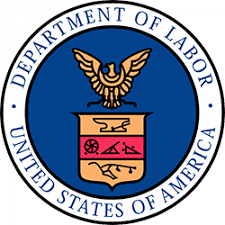The Department of Labor issued a Proposed Rule on August 27, 2020 setting forth the registration requirements for Pooled Plan Providers (PPPs). Under the Proposed Rule, PPPs who plan to begin operating on January 1, 2021 must submit an initial registration on or after October 3, 2020 and on or before December 2, 2020.
Background
The Setting Every Community Up for Retirement Enhancement (SECURE) Act permits “pooled employer plans” (PEPs) to begin operating starting on January 1, 2021. PEPs are multiple employer plans with participating employers that don’t share a common industry or location. PEPs are intended to allow smaller employers to leverage their collective purchasing power to reduce retirement plan costs and administrative burdens. A PPP acts as the plan administrator and is a named plan fiduciary for a PEP.
The SECURE Act requires PPPs to register with the Secretary of Labor before beginning operations, and includes a separate authorization for the DOL to require reporting of other information. The SECURE Act did not include specific content requirements for the PPP registration.
Proposed Rule
The Proposed Rule includes requirements for an initial registration filing, supplemental filings, and a final filing, as described below. The DOL explains that the purpose of these filings is to provide time-sensitive knowledge to the DOL, the Treasury Department, and the IRS to permit those agencies to oversee PPPs, and to allow employers hiring a PPP to be able to exercise their fiduciary duties of selection and monitoring.
- Initial Filing: The prospective PPP must make an initial filing 30 to 90 days before beginning operations, which must include the following information:
- Basic identifying information about the pooled plan provider, including: legal business name; Federal EIN; telephone; mailing address; website, if any; identifying information for the primary compliance officer of the PPP; and agent for service of legal process.
- Approximate date when plan operations are expected to commence.
- A description of the administrative or investment services (including investment management, investment advice, investment products, plan administration, and custodial or trustee services) that will be offered, including identification of, and a description of the role of, affiliates who will help provide those services.
- A statement disclosing any criminal convictions related to the PPP.
- A statement disclosing any pending legal or regulatory proceedings.
- Supplemental Filing: Supplemental filings are required for information about reportable events, which would include any change in the information filed as part of the initial registration and also significant financial and operational events related to the PPP and the PEPs it sponsors.
- Final Filing: A final filing must be made once the last PEP has been terminated and ceased operations.
The Proposed Rule requires electronic filing of all PPP registrations, and also provides that a new EBSA form be established– EBSA Form PR (Pooled Plan Provider Registration) (Form PR) – as the required filing format for PPP registrations. The proposed Form PR, and draft instructions, which are attached as Appendix A to the proposal, provide blanks for a PPP to report the information required for the initial, supplemental and final filings described above.
Next Steps
This Proposed Rule was published in the Federal Register on September 1, 2020. The DOL will accept comments on the Proposed Rule for 30 days after the proposal is published in the Federal Register.
In addition to the Proposed Rule, the IRS and DOL are authorized by the SECURE Act to issue the following additional guidance related to PEPs:
- Model plan language that may be used for a plan to be treated as a PEP;
- Guidance about the administrative duties and other actions required to be performed by a PPP;
- Guidance about procedures to be taken to terminate a PEP;
- Guidance about what actions an employer must take to facilitate the administration of the PEP;
- Guidance identifying instances in which employers should be kicked out of PEPs; and
- Information about what audits, examinations or investigations of a PPP the DOL may perform.
Until guidance is issued, employers and PPPs will not be treated as failing to meet the applicable requirements so long as they comply in good faith with a reasonable interpretation of the SECURE Act.

